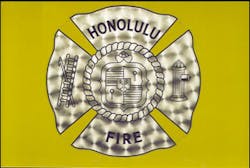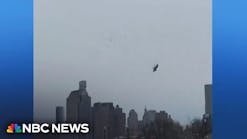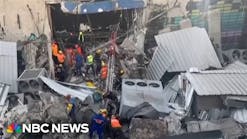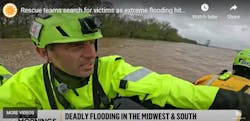- Slideshow Images: Honolulu, Hawaii, Hazmat Team
Honolulu is a beautiful city on the Hawaiian island of Oahu. The Honolulu Fire Department (HFD) provides fire protection for the entire Island of Oahu, except for the military installations and Honolulu International Airport. I was surprised to learn it is the only public fire department on the island. Honolulu's fire department was established in 1851 by King Kamehameha III. It was the first fire department in the Hawaiian Islands and the only one in the United States established by a ruling monarch. Honolulu firefighters were volunteers until 1893, when the legislature authorized funding for salaries for them.
During the attack on Pearl Harbor on Dec. 7, 1941, the Honolulu Fire Department dispatched three engine companies to fight fires caused by the bombing. Engines 1, 4 and 6 responded and firefighting efforts resulted in the deaths of two fire captains and a hoseman and injuries to six other firefighters. The firefighters killed and wounded received Purple Hearts, the only civilian firefighters in the United States ever receiving such an award.
Today, the HFD has over 1,000 uniformed personnel under the leadership of Chief Kenneth G. Silva the departments 33rd fire chief. The department protects the entire island of Oahu, 604 square miles and a population of approximately 1.2 million (75% of the population of Hawaii), using 42 engine companies, 15 ladder companies (eight tiller apparatus, five quints and two tower ladders), two heavy rescue squads, one aircraft tender, five water tankers, one brush unit, two hazardous materials units, two helicopters and a fireboat. Companies are located in 44 fire stations and organized into five battalions.
Honolulu firefighters work three 24-hour shifts with a day off between each shift and four days off following their third shift. Their shifts are called watches, so they have first, second and third watch. HFD is the 16th largest fire department in the United States. Because immediate mutual aid is not practical from the other Hawaiian Islands, Honolulu firefighters must rely on their own resources to handle any emergencies that arise. (Limited mutual aid does occur between Honolulu and the federal fire departments on Oahu military installations and refineries, which have their own fire departments.) Emergency Medical Services (EMS) are managed by a separate city agency. HFD recruits are trained to the EMT-B level and the department provides basic life support at the majority of medical emergencies in the city.
HFD's Charles H. Thurston Training Center is located next to Station 8 the - Mokulele Fire Station, near Honolulu International Airport. While I was visiting the center, the familiar sound of a firehouse siren activated at the fire station next door. I was surprised to hear the siren, since there are no volunteer fire companies on the island. As it turns out, fire stations located near major intersections are equipped with house sirens that sound when an alarm is dispatched to warn motorists of fire apparatus entering the street.
HFD's Hazardous Materials Team was placed in service in 1990 and responds to all petroleum, radioactive materials and toxic chemical incidents on the island. There are two hazardous materials units in separate companies, Hazmat 1 is based in the Kalihi Valley at Station 32 (Kalihi Uka Fire Station) and Hazmat 2 is located in Kapolei at Station 40 (Kapolei Fire Station).
Vehicle(s)
Both Hazmat 1 and Hazmat 2 are 2000 Pierce vehicles. Both hazmat units are equipped similarly with typical hazmat decontamination, patching and plugging tools and supplies, personal protective equipment (PPE), breathing apparatus and miscellaneous tools. Each also carries a portable weather station, an underwater digital camera and a thermal imaging camera. The federal fire department at Pearl Harbor has a non-dedicated hazmat team available for mutual aid. The Honolulu International Airport Fire Department is operated by the state and foam units are available for mutual aid.
Staffing
Hazmat 1 & 2 are dedicated hazardous materials response teams. Station 32 houses Engine 32 as well as Hazmat 1. Station 40 houses Engine 40, Tower 40 and Brush 40 as well as Hazmat 2 and is Battalion 4 Headquarters. Engine 32 is staffed by five technicians and Tower 40 also has five technicians. Hazmat 1 and Hazmat 2 each have five technicians. All HFD engine and truck company personnel are trained to provide decontamination. There are an additional 300 trained hazmat technicians stationed through out the island.
Training Requirements
All Honolulu firefighters are trained to HazMat Operations level. Captains assigned to the hazmat units assist the department's Training and Research Bureau in providing hazmat training for all other department members. Hazmat technicians initially attend a two-week Chemistry of Hazardous Materials class and two weeks of hands-on training involving PPE, decontamination, monitors, strategy and tactics, and other equipment. Team members also attend National Fire Academy terrorism response training and are sent to the National Fire Academy in Emmitsburg, MD, for other hazardous materials classes.
Monitoring Instruments & Identification Equipment
Monitoring capabilities include:
- BW multi-gas monitors (three four-gas units and and three three-gas units)
- Draeger Tubes (18 gases or vapors)
- Draeger CMS
- Hazcat
- Guardian-Biocapture (Guardian Reader)
- Ludlums Micro Rem
- Ammonia & Chlorine detectors
- Pocket Dosimeters
- Canberra Ultra Radiacs
- Rae PID
- IR analyzer
- Hazmat CAM
Terrorist Agent ID:
- APD 2000
- M-8 paper
- Hazmat CAM
Personnel Protective Equipment
Level A
- Kapler Responder WMD Type
Level B
- PSC-Beta, Kapler Blue, Tyvec Saranex Yellow and Tyvec White
Respiratory Protection
- Breathing apparatus is manufactured by MSA and one-hour bottles are used for hazmat and 45-minute bottles for quick entry on apparatus for firefighting. Communication in suits is accomplished with bone mikes.
Research Resources
Computer Software Programs
- CAMEO
- MARPLOT
- ALOHA
- X PUB
- TOMES
Hard Copy Reference Books
- Chris Manual
- Mereck Index
- NIOSH Pocket Guide
- Emergency Response Guide
- HM Response Guide Book
- Crop Protection Handbook
Standard Operating Procedures/Guidelines
Check with Honolulu Fire Department Hazmat for specific SOP/SOG's
Hazardous Materials Exposures
Because Oahu is an island, there are no interstate highways or railroads. Everything, including hazardous materials shipments, brought onto the island arrives by either air or water. Trucks transport hazardous materials to locations of storage and use on the island. Honolulu has a large port facility with intermodal containers of hazardous materials (see Intermodal Containers: What's Inside Those Big Boxes? in the December 2004 issue of Firehouse). Hazardous materials exposures include two refineries (with their own fire departments), sulfuric acid, propane, anhydrous ammonia used in cold storage facilities, pipelines, petroleum storage and pesticides. Hawaii has the largest synthetic natural gas plant in the United States and a 12 million-gallon petroleum storage facility, built into a mountain during World War II.
Contact Information
For additional information or questions, contact:
Battalion Chief Jeff Farris, Special Operations
Phone (808) 723-7182, Fax (808) 723-7121
E-Mail: [email protected]
Slideshow Images:






